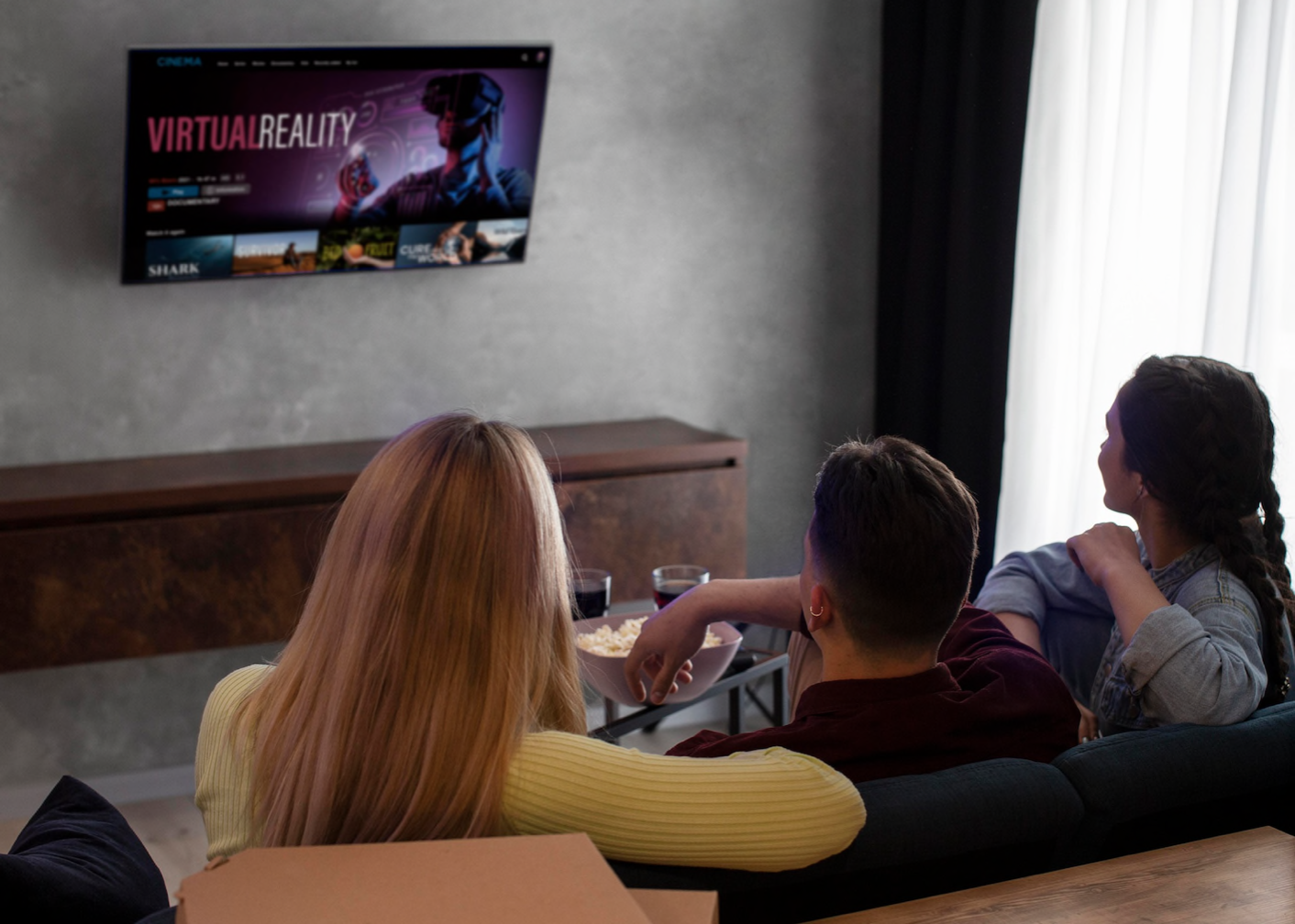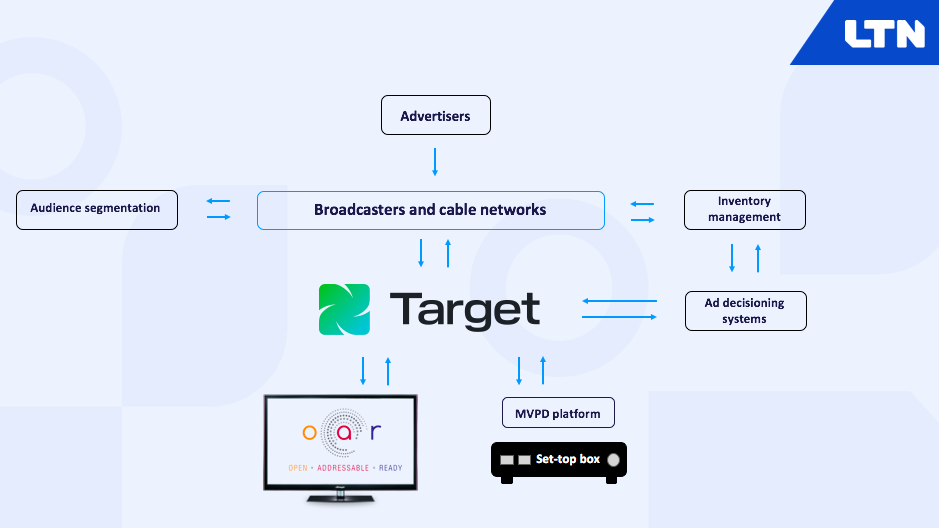‘Reaching the Right Person at the Right Time’
New advertising solutions prioritize targeting, monetization and viewer engagement

SAN FRANCISCO—At its outset, it was touted as a revolutionary technology, a solution that could streamline and simplify each piece of the intricate, confusing and complex advertising process and bring in more ad dollars along the way.
It has matured since those early days as it mastered real-world hiccups like mismatched transfer rates, inconsistent measurement and problems with scalability.
As time has progressed, however, so have the capabilities inherent in modern advanced advertising technologies. What has emerged is a set of road-tested solutions that manage to meet several lofty goals: reaching the right viewers at the right time, thriving in time-sensitive cycles like an election year, managing orders as well as customer relationships and more. .
Political Ad Windfall
“Advanced advertising has always been about reaching the right person at the right time with the right message,” said John Gee, consultant and chief business development officer at LG Ads. “As new technologies, ways to view television, personalize, discover and experience content and advertising evolve, it will be easier to deliver the right message to the right viewer efficiently, in a way that keeps them engaged and is the least disruptive to their viewing experience.”
One of those “baptism by fire” moments awaits the industry later this fall. According to a report by BIA Advisory Group, the 2022 political season could potentially generate $8.4 billion in local advertising dollars, with local television receiving a large share of that spend in the leadup to the November 2022 midterms.
“Political spending is anticipated to be very large this year and other bright spots are surfacing that will affect ad revenue across the country for all media channels,” said Tom Buono, BIA CEO and founder, adding that many business verticals in 2022 are expected to exceed 2019 levels after the pandemic-based drop in 2020 and 2021.
Stations expecting to capture part of that burst of advertising dollars must consider the advertising realities that exist in the fast-paced political space, particularly in the last few months before the midterm elections on Nov. 8, 2022.
Get the TV Tech Newsletter
The professional video industry's #1 source for news, trends and product and tech information. Sign up below.
How to do that? The bottom line is that broadcast and digital sales departments need to be responsive. This is a particularly true for sales staff at broadcast TV and radio stations, said political strategist Bud Jackson who, alongside another political strategist and BIA Advisory Services Managing Director Rick Ducey, was a panelist during a recent webinar on focused on how broadcast stations can earn a greater portion of political advertising dollars during the upcoming election season.
“One of the downfalls of TV vs. digital is getting creative in or out in a timely manner,” Jackson said. “Being available on the weekend somehow in the last couple of weeks is huge.” He recalled a political strategist’s nightmare story of a time when an incorrect advertising spot ran over and over during a weekend — because he couldn’t get anyone in the sales department on the phone after 5 pm on a Friday.
The lesson learned: since advertising customers are going around the clock, so must you.
Know Your Customers
That type of round-the-clock customer focus is a key benefit of advanced advertising systems. It is customer relationship management (CRM) capabilities in advanced advertising systems that allow a sales team to more adroitly manage active customer accounts and make changes quickly, such as during an active political season. Advanced systems track accounts, monitor active proposals, keep tabs on standing orders. Keeping tabs on sales is a key feature of the Marketron REV system, for example, including detailing status of an order, keeping tabs on the review process as well as providing key metadata on final orders.
“It’s important that you understand your customers because buyers right now are going around the clock,” said Evan Tracey, senior vice president of National Media as well as a professor and political strategist, during a recent political webinar. “Be really mindful. Their responsibilities are huge. And problems will arise. The ones the at fix it the quickest will be remembered fondly. The ones that are out on a Friday in November, not so much.”
“It’s important that you understand your customers because buyers right now are going around the clock."
Evan Tracey, National Media
Advanced advertising technologies have also proven themselves when it comes to smart pricing. Some systems, like the REV, tout the ability to use advanced algorithms and historical data to automatically set spot prices based on open blocks and fill rates. Some can set rate curves as well as floor and ceiling rates down to a 30-minute time block.
One of the features that advanced advertising has long touted is the ability to provide advanced targeting and a richer engagement for viewers. Depending on the system, the technology can deliver ads to a household level, offering to get the right inventory to the right audience. Systems like the LTN Target universal signaling system allow for linear channels to run national addressable ads at scale during live linear broadcasts.

According to LTN Global, the type of responsiveness that can be found in a digital advertising setup can also be recreated within a broadcasting’s traditional linear set up, resulting in several improvements. The system can format and insert watermarks, handle SCTE 35 cue tone markers within an MPEG transport stream, and use key metadata for addressable ad decisioning and replacement during live, linear programming, regardless of the distribution platform.
That addressable piece of the puzzle is key. Traditional TV reaches a massive audience but lacks the addressable capability of digital. And there’s much to be gained by making that transition. A recent report from Deloitte Global predicts that addressable TV advertising — allowing different ads to be shown to different households watching the same program — is expected to generate about $7.5 billion globally this year.
Who’s Watching?
To grab a larger share of that market, broadcasters and content creators must first answer one key question: who is actually in the room watching the TV? “I think [that is] the most important area that ad tech needs to solve,” Gee said. “Several companies are working on how to do that in a privacy centric way, including LG Ads. We’ve developed speech technology that can be trained to recognize all the individuals in the household. It can be used by TV OEMs to control the TV, provide highly personalized viewing experiences for content and ads and ways to interact with both, keeping viewers engaged.”
Keeping viewers engaged is a big part of user-centric dynamic ad insertion, a feature touted for its ability to provide an engaging viewing experience with the viewer while enhancing the monetization of the related ad inventory. A solution like PRISMA from MediaKind connects a content owner’s ad inventory to advertisers via an ad decision server or server-side platform integration (SSPI) system.
Through an SSPI system, advertisements can be personalized on a per user or audience basis in a live or near-live scenario or non-live situation. In live programming, dynamic ad replacement of an entire ad break is possible, as well as on a spot-by-spot basis. The same can be accomplished in a non-live VOD, personal video recording or catch-up TV service.
Telestream is another company using dynamic ad insertion to monitor quality and avoid lost revenue. The company’s iQ video monitoring solution watches for quality issues in each step of the delivery chain including identifying missing SCTE-35 ad placement markers and tracking ad behavior. Other features include visual validation of successful ads, alerts for ad-related issues and the ability to track fluctuations and errors.
Ad Insertion Platform, a 15 year-old Swiss-based developer of products geared towards monetization in the streaming and broadcasting industry, offers DAI Connect, an SSAI platform that can be used to create user targeted ad pods or ad breaks. A feature called “Manifest Manipulator” inserts a created ad pod in at the manifest level for each end user so that content can be transcoded on the same profile to preserve required video quality. The AIP Optimizer enables unified headers so that open inventory can be sold programmatically at the best price.
The Power of Programmatic
One company that has invested in an advanced advertising solution from AIP is Spanish technology company TVUP Media Telecom, who is using the technology to help monetize its advertising inventory. Using AIP, TVUP is able to programmatically sell video ad inventory and enable server-side ad insertion. The combination of AIP’s advanced ad serving capabilities and the ability to insert dynamic ads into video content is helping the company optimize the value of its inventory.
“Thanks to AIP’s programmatic ad sales services, we can increase our ad revenue and maximize fill rates,” said Eudald Domènech, CEO of TVUP, adding that the technology also allows for seamless stitching of video ads within the company’s complex digital infrastructure.
The company also recently inked a partnership with the software-as-a-service platform company Veset to manage SSAI for live and on-demand content on Veset’s playout platform.
“We’re making it easy for broadcasters and content owners to create a seamless, sophisticated workflow for originating and monetizing their linear and streaming channels,” said Igor Krol, CEO of Veset.
The Cloud’s Role
Other companies have taken their solutions to the cloud. The cloud-native platform Imagine Aviator enables content creators to plan, make and monetize premium-quality linear and OTT content from one unified platform.

The goal is specific, according to Brad Herman, senior vice president of product at Imagine Communications. “The primary goal for media companies today is to increase eCPMs and operational efficiency of monetizing CTV inventory — to maximize revenue while lowering operational costs,” he said.
Imagine calls the system a converged solution that delivers linear programming and VOD content with ads, with associated triggers for local and dynamic ad insertion. And that linear-like control of connected TV monetization is key in delivering a broadcast-quality viewing experience, Herman said. “This results in more advertisers being comfortable running campaigns, which ultimately increases eCPMs of CTV inventory. A better viewing experience can also lead to increased viewing times, which then generates more ad opportunities. And delivering a broadcast-quality ad experience enables media companies to satisfy linear under-delivery on CTV.”
The company announced at the NAB Show that it plans to expand the platform’s capabilities to allow media companies to sell their own ad inventory rather than connecting to a demand-side platform to fill available inventory. Inventory can be sold by audience, context or by spot with additional functionality that can adjust for hard-to-plan scenarios like breaking news and live sporting events.
“As consumers find more ways to watch, the efficiencies of [the] cloud play an important role, making it easier for media companies to address broadening advertising opportunities and create highly impactful and dynamic channels with genuine appeal to viewers,” said Rob Malcolm, chief product officer at Imagine Communications when the solution was released just prior to the 2022 NAB Show.
And there is more to come, whether that’s improving reach to micro-audiences or new opportunities as stations convert to NextGen TV. Or even virtual and augmented reality, Gee said.
“VR/AR has the potential to be a real game changer for both advertisers and content producers,” he said. “It can be ‘always on,’ it’s a deeply engaging way to experience content and ads, and it’s truly one-to-one, the ultimate in being able to deliver the right message to the right person at the right time.”
When it comes to advanced advertising, that’s exactly what we’re looking for.
Susan Ashworth is the former editor of TV Technology. In addition to her work covering the broadcast television industry, she has served as editor of two housing finance magazines and written about topics as varied as education, radio, chess, music and sports. Outside of her life as a writer, she recently served as president of a local nonprofit organization supporting girls in baseball.

